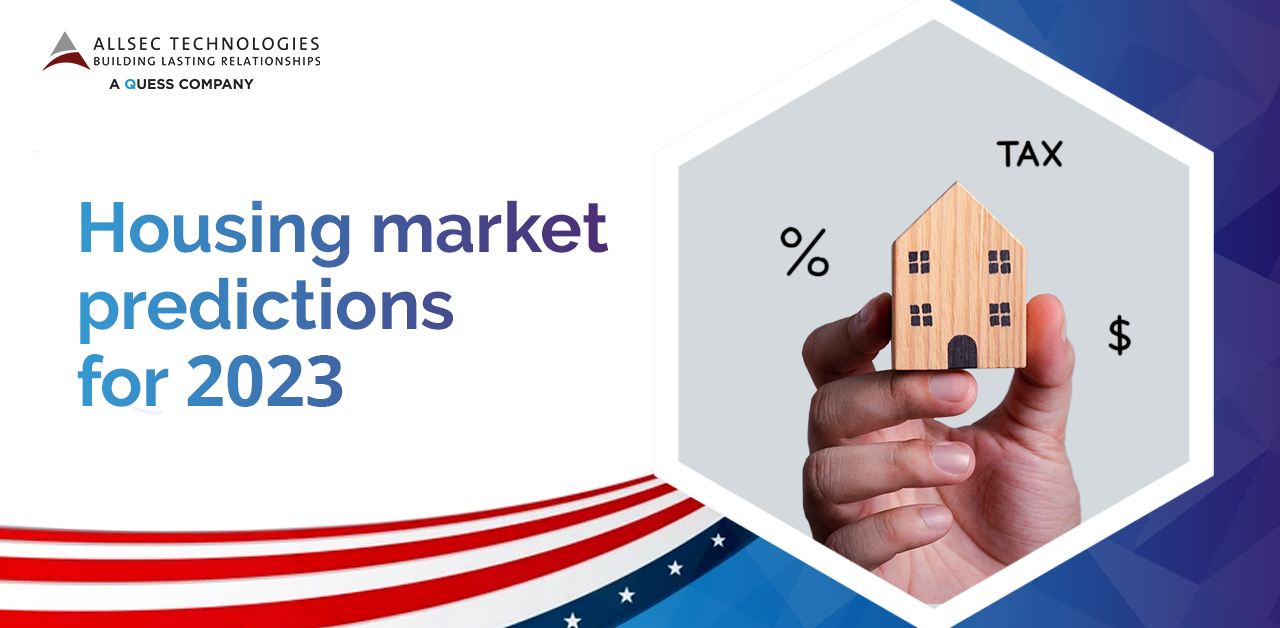
Housing market predictions for 2023
The housing market has seen its fair share of ups and downs for the past few years thanks in large part to the pandemic, the Russia-Ukraine war, increasing interest rates, and regulatory changes. As we begin 2023, Mr Satyajit Biswas (Head of Title & Mortgage Services at Allsec) takes stock of some of the challenges in store for buyers and sellers alike.
“We expect market volatility to continue well into 2023 driven by fluctuations in interest rates. However, with housing being a basic need, we don’t expect demand to completely dry up,” he says.
The Domino Effect of Inflation
Home prices across the United States hit record highs in 2021 and the early part of 2022. Higher mortgage rates driven by a variety of factors resulted in lower demand and lower inventory in the housing market. However, home prices haven’t dropped significantly post pandemic.
At the time of writing, the inflation rate is at 7.1% and the average 30-year fixed mortgage rate is at 6.63% according to the National Association of Realtors. Additionally, the recent interest rate hikes by the Fed aimed at curbing record levels of inflation have put a dampener on any hopes of increased sales activity in the housing sector.
“High interest rates can also lead to an increase in defaults on loans and an increase in overall housing inventory as well,” says Satyajit.
An Interest-ing Take
Nadia Evangelou, senior economist and director of Real Estate Research for the National Association of Realtors, envisions 3 possible scenarios:
“In scenario #1, inflation continues to remain high, forcing the Fed to raise interest rates repeatedly. That means mortgage rates will keep climbing, possibly near 8.5 percent. In scenario #2, the consumer price index responds more to the Fed’s rate hikes, and there is a gradual deceleration of inflation, causing mortgage rates to stabilize near 7 percent to 7.5 percent for 2023. In scenario #3, the Fed raises rates repeatedly to curb inflation and the economy falls into a recession. This could cause rates to likely drop to 5 percent,” she explains.
Irrespective of which scenario transpires, the consensus across industry experts is that slower sales are expected to continue into the latter half of 2023.
A Silver Lining
Despite these predictions, it is not all doom and gloom for the sector. We anticipate a lot of positive trends to take hold towards the tail end of 2023 leading into 2024. If the Fed’s measures to tackle inflation are effective, then the lower prices and stable mortgage rates that follow, could result in an increase in the sales of homes. The end of the Russia-Ukraine war can also bring some relief as well. Demand for homes in Tier II cities driven by a large influx of new homeowners due to remote work, can bring some much needed stability to the market.
In our experience, keeping a weather eye on the evolving market trends will enable businesses to quickly reassess strategies and take advantage of opportunities. On that note, let’s check in at mid-year to revisit the above predictions.


